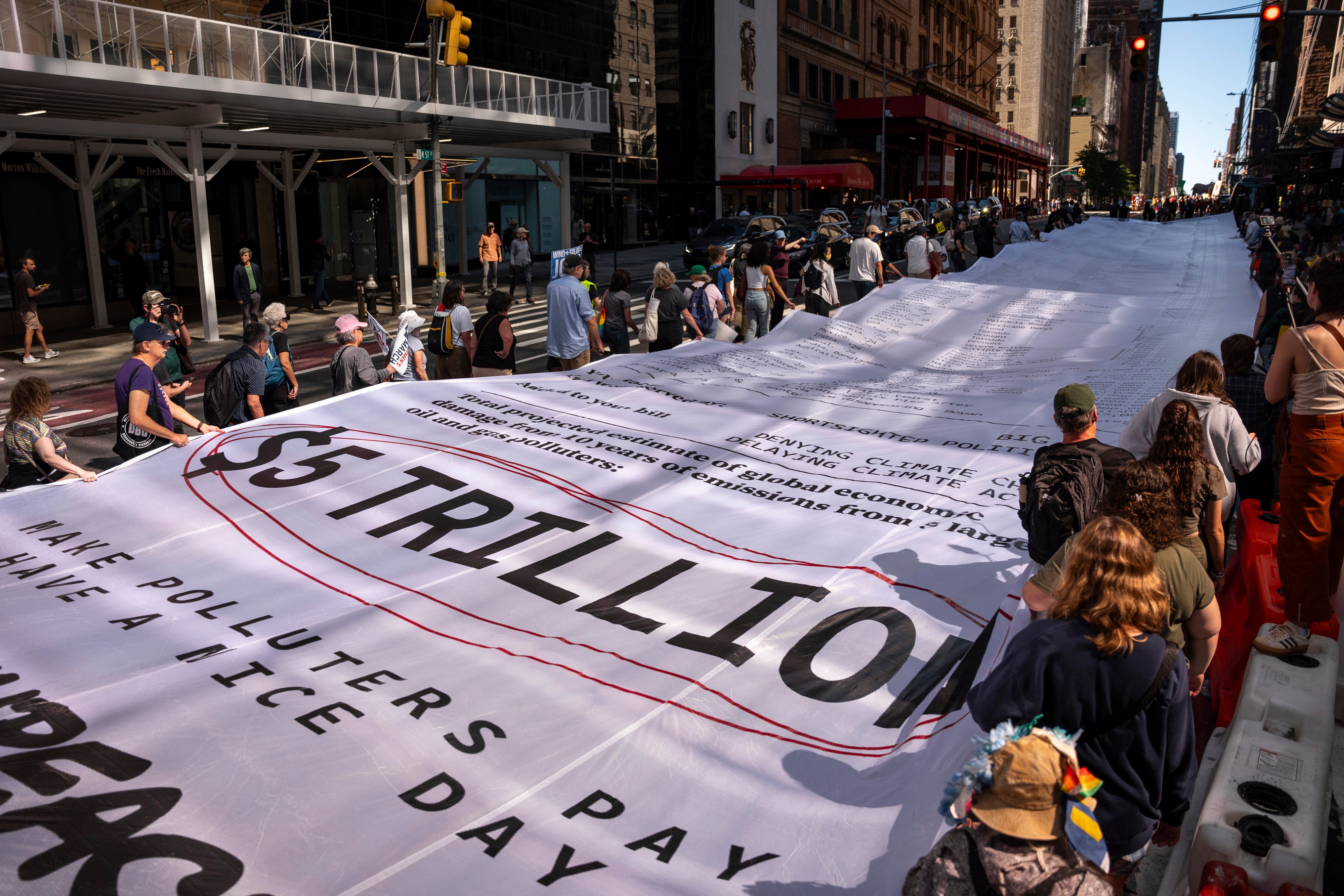Global aid systems are losing billions of pounds by waiting until after disasters strike instead of acting early to protect people and economies, according to a new analysis.
Investing in resilience and anticipatory support before climate shocks hit can be up to five times more cost-effective than traditional post-disaster aid, study by the International Institute for Environment and Development (IIED) said on Tuesday.
Researchers modelled climate-related losses in eight countries across Africa and Asia, using six decades of data on droughts, floods and other shocks. They estimate these nations face $21.4 billion (£17.6bn) in damages every 20 years – roughly equivalent to Senegal’s annual GDP – from losses such as livestock deaths, destroyed infrastructure and medical costs.
Under the current system, governments and donors respond after disasters occur, through humanitarian relief or emergency social protection payments. But these measures are “too reactive”, the report says, and they are inefficient and far more expensive.
To fully offset the $21.4 billion (£17.6bn) in expected losses, existing social protection systems would require $93 billion (£76.4bn), while post-disaster humanitarian responses would cost $25.8 billion (£21.2bn).
By contrast, early resilience investments – such as reinforcing infrastructure, drought-proofing livelihoods, and strengthening disaster-response institutions – could achieve the same protection for just $4.1 billion (£3.4bn).
“This evidence shows governments can protect people and economies at a fraction of the cost of waiting until disaster strikes,” said Ritu Bharadwaj, IIED’s director for climate resilience, finance and loss and damage, and the study’s lead author.
“The choice is simple. Invest early and save lives and money, or pay far more later when recovery is harder and families are already trapped in crisis.”

The report compares four intervention types: existing social protection, humanitarian aid, anticipatory cash or food transfers before disasters, and long-term resilience investments. The results are striking.
Each dollar spent on early resilience yields $5.17 (£4.25) in avoided losses and development gains. Anticipatory transfers, where support reaches communities in advance of forecast events, return $2.06 (£1.70) per dollar spent. In contrast, humanitarian response delivers less than one-to-one returns ($0.83 [£0.68]), while existing social protection schemes provide just $0.23 [£0.19], falling well below the break-even point.
Average losses after climate shocks could also be reduced dramatically: from 100 per cent of baseline losses to 27 per cent with resilience investments, or 42 per cent with anticipatory transfers, compared with 59 per cent under humanitarian response.

The findings echo growing calls for an overhaul of the global aid system, which still channels most climate finance and development assistance into emergency relief.
“Countries are already using this analysis to prepare proposals for the new Fund for Responding to Loss and Damage,” Ms Bharadwaj said.
“In an era of shrinking aid budgets, every dollar counts. If we spend those limited resources wisely on early action, we can save lives, protect economies, and avoid pouring money into inefficient systems that cost more than the disasters themselves.”
The research focuses on eight countries – India, Pakistan, Bangladesh, Kenya, Ethiopia, Malawi, Mozambique and Senegal – many of which are experiencing increasingly frequent droughts, floods and storms as the planet warms.
India alone could face over $11 billion (£9.03bn) in 20-year losses, while Pakistan’s risk stands at $6.5 billion (£5.34bn) and Bangladesh’s at $2.3 billion (£1.89bn).
The report arrives ahead of key international finance discussions in the run-up to Cop30 in Brazil, where the design of the new Loss and Damage Fund remains under negotiation. Advocates say this fund could provide the financial architecture to support pre-arranged finance and early-warning systems that activate support before crises escalate.
Some of the world’s poorest countries have been suffering the brunt of climate-crisis induced disasters a lot harder than developed countries. Floods and heatwaves have disrupted farming patterns, intensified exisiting problems and overwhelmed disaster response across Africa, Asia and Latin America. Analysis shows disasters have cost over a hundred billion pounds across the past two decades.
The poorest and most climate-vulnerable countries are also spending billions of pounds more to repay debts than they receive in funding to fight the climate crisis.
This article was produced as part of The Independent’s Rethinking Global Aid project



